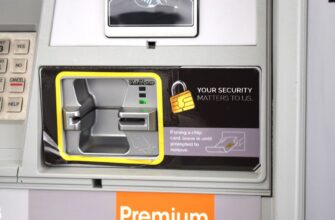- Secure Your Secrets: Best Practices to Anonymize Private Key with Password
- Why Anonymizing Private Keys is Crucial for Security
- Core Principles of Private Key Anonymization with Passwords
- Step-by-Step Guide: How to Anonymize Your Private Key with a Password
- Common Pitfalls to Avoid When Protecting Private Keys
- Advanced Techniques for Enhanced Security
- FAQ: Anonymize Private Key with Password Best Practices
Secure Your Secrets: Best Practices to Anonymize Private Key with Password
In today’s digital landscape, protecting sensitive cryptographic keys is non-negotiable. Anonymizing your private key with a password transforms it from a vulnerable string of data into a fortified digital asset. This guide dives into essential best practices for anonymizing private keys using passwords—ensuring your blockchain wallets, encrypted communications, and digital identities stay secure against breaches. Learn how to implement robust protection that balances accessibility with ironclad security.
Why Anonymizing Private Keys is Crucial for Security
Private keys are the linchpin of cryptographic systems. If exposed, they grant attackers full access to your funds, data, or identity. Anonymization—obscuring the key’s origin and ownership—adds a critical layer of defense. Pairing this with password encryption ensures that even if the anonymized key is intercepted, it remains unusable without your secret passphrase. This dual approach mitigates risks like targeted hacking, phishing, and physical theft.
Core Principles of Private Key Anonymization with Passwords
Effective anonymization hinges on three pillars:
- Irreversibility: Use one-way hashing (e.g., SHA-256) to ensure the original key can’t be derived from the anonymized version.
- Password Strength: Combine uppercase/lowercase letters, numbers, and symbols in a 12+ character passphrase. Avoid dictionary words or personal info.
- Secure Storage: Never store passwords and keys together. Use encrypted password managers or hardware wallets.
Step-by-Step Guide: How to Anonymize Your Private Key with a Password
Follow this workflow for optimal security:
- Generate a Strong Password: Use a trusted tool like KeePass or Bitwarden to create a unique passphrase.
- Encrypt the Key: Employ AES-256 encryption via OpenSSL or GnuPG. Command example:
openssl enc -aes-256-cbc -salt -in private.key -out encrypted.key - Anonymize Metadata: Remove identifiable tags (e.g., wallet names) from the key file.
- Verify Integrity: Test decryption on an air-gapped device before deleting the original key.
- Backup Securely: Store the encrypted key offline (e.g., USB drive in a safe) and memorize your password.
Common Pitfalls to Avoid When Protecting Private Keys
Steer clear of these critical errors:
- Weak Passwords: “Password123” or simple patterns are easily cracked.
- Cloud Storage Risks: Never upload unencrypted keys to services like Google Drive or email.
- Reusing Passwords: Unique passwords per key prevent domino-effect breaches.
- Ignoring Updates: Outdated encryption algorithms (e.g., DES) are vulnerable—stick to modern standards.
Advanced Techniques for Enhanced Security
Elevate your protection with these strategies:
- Multi-Factor Encryption: Layer encryption (e.g., AES + ChaCha20) for defense-in-depth.
- Shamir’s Secret Sharing: Split keys into multiple shards, requiring a threshold to reconstruct.
- Hardware Security Modules (HSMs): Use dedicated devices for key generation and storage.
- Zero-Knowledge Proofs: Verify key ownership without revealing the key itself.
FAQ: Anonymize Private Key with Password Best Practices
Q1: Can I use biometrics instead of a password for key anonymization?
A: Biometrics (e.g., fingerprints) are convenient but less secure than strong passwords. They can’t be changed if compromised. Use them as a secondary factor, not a replacement.
Q2: How often should I rotate my encrypted private keys?
A: Rotate keys immediately after a suspected breach. Otherwise, every 6-12 months—or when upgrading security protocols.
Q3: Is it safe to anonymize keys on a public computer?
A: Absolutely not. Public devices may have malware. Always perform key operations on a trusted, offline machine.
Q4: What’s the difference between encryption and anonymization?
A: Encryption scrambles data using a password; anonymization removes identifying metadata. Use both for comprehensive security.
Q5: Can quantum computers break AES-256 encryption?
A: Current quantum threats target asymmetric cryptography (e.g., RSA). AES-256 remains quantum-resistant but monitor NIST’s post-quantum standards for updates.
Q6: Should I share my password with a trusted contact?
A: Only via secure methods like encrypted messaging. Better yet, use Shamir’s Secret Sharing to distribute shards without revealing the full password.
By mastering these best practices, you transform your private key from a liability into a bastion of security. Start implementing them today—your digital safety depends on it.








